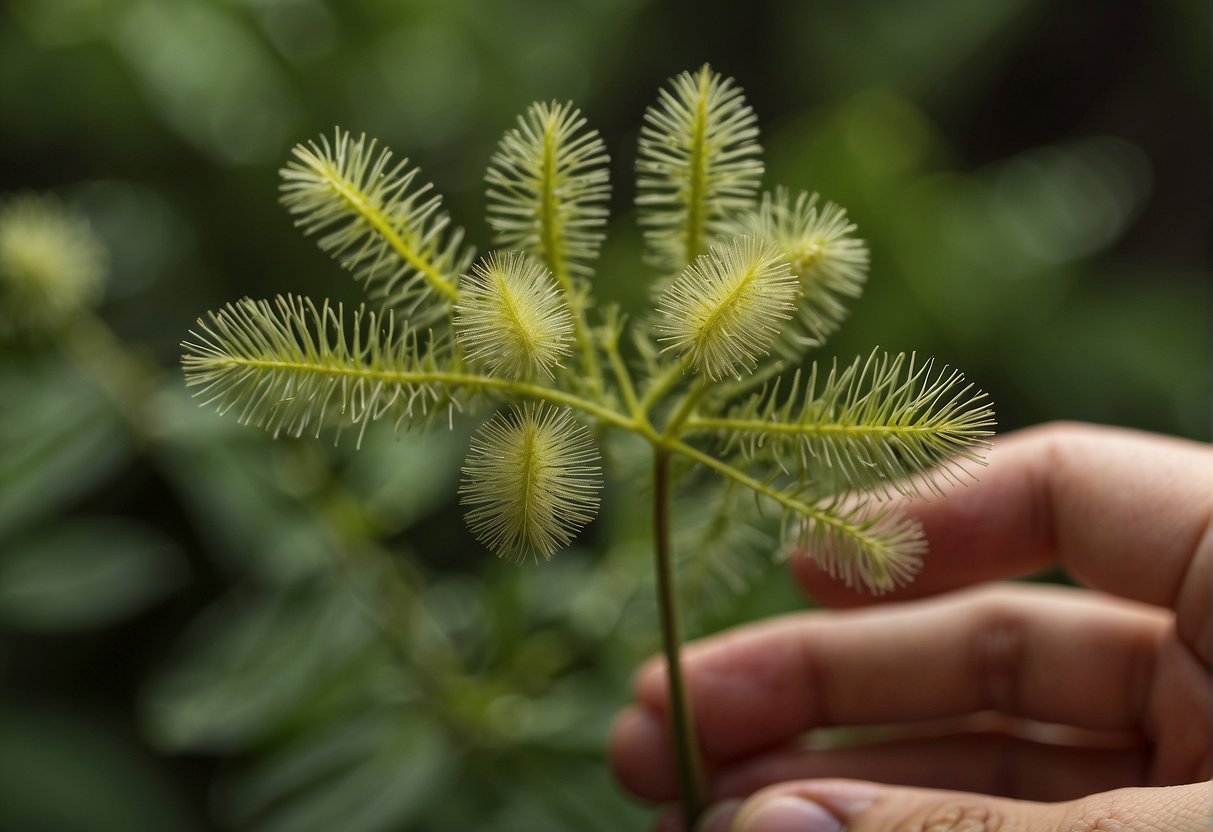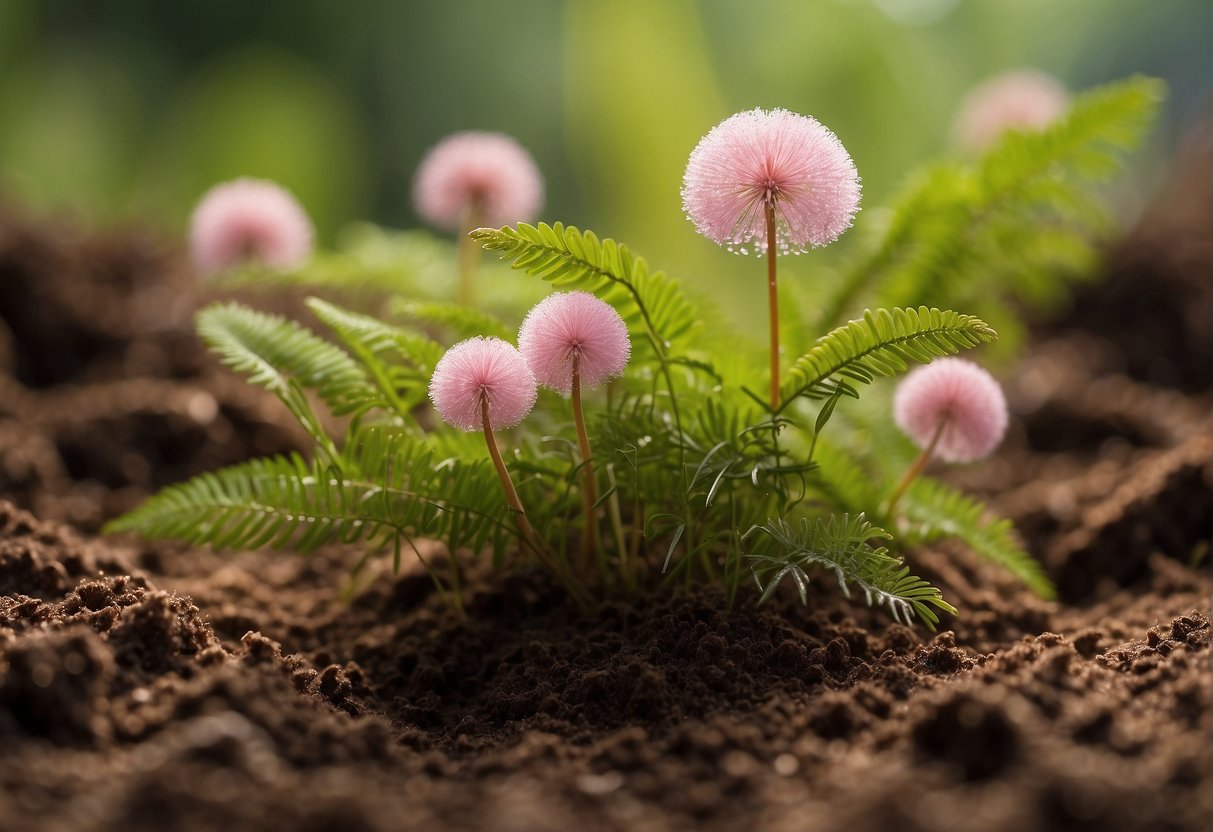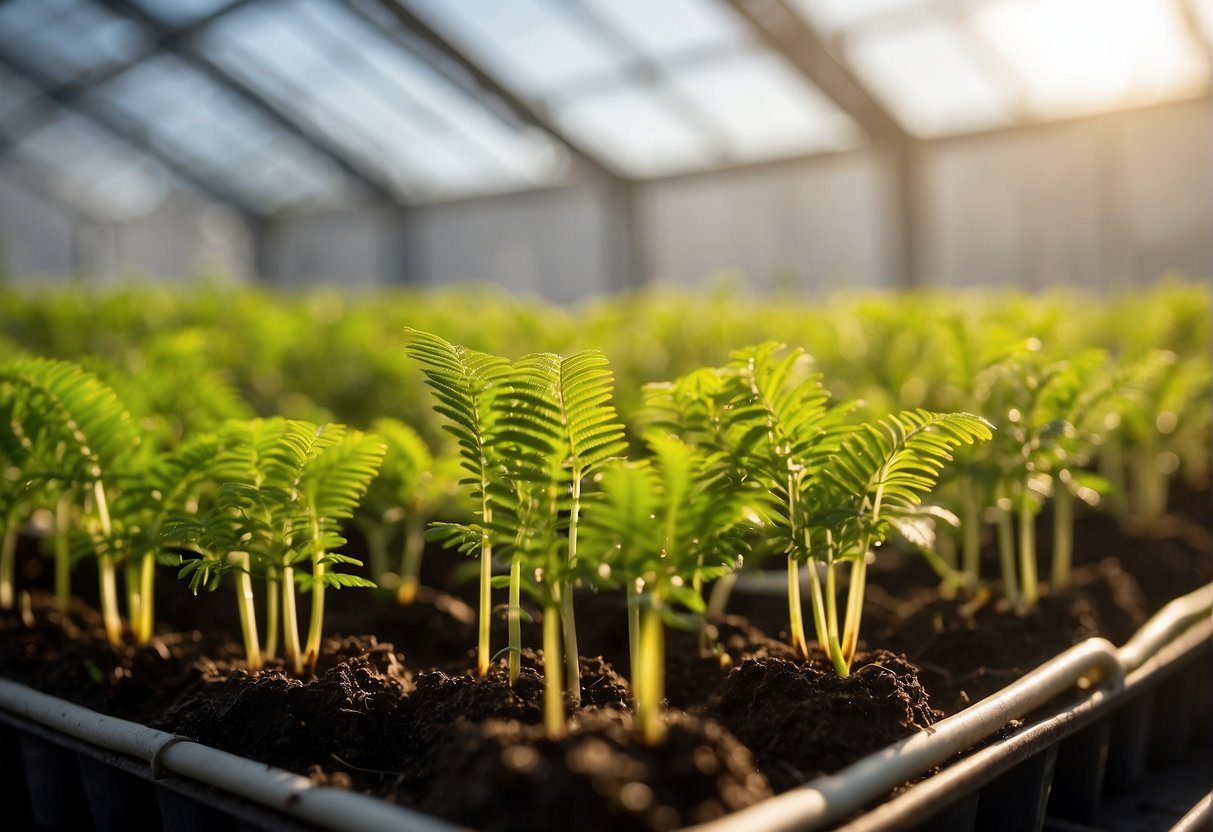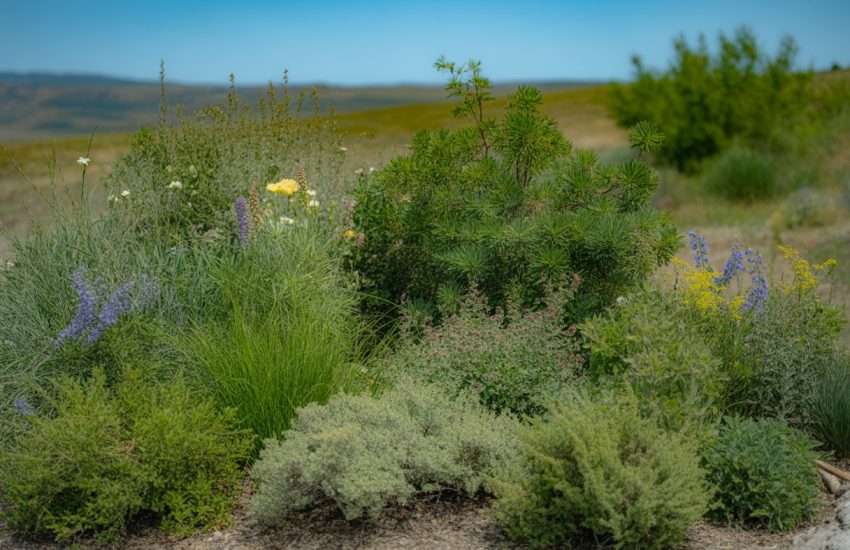Mimosa Pudica from Seed: How to Grow and Care for the Sensitive Plant
Mimosa pudica, commonly known as the sensitive plant or touch-me-not, is a plant species belonging to the Fabaceae family. It is an annual plant or a short-lived perennial that is native to South and Central America but has now become a pantropical weed. The plant is known for its unique ability to fold its leaves and droop its branches when touched, earning it the name “sensitive plant.”

Growing Mimosa pudica from seed can be a rewarding experience for gardeners and plant enthusiasts. The process is relatively simple and can be done in a variety of settings, including indoors and outdoors. The first step is to obtain high-quality seeds from a reputable source. Once the seeds have been acquired, they can be planted in a well-draining potting mix and kept moist until germination occurs. With proper care and attention, the seeds will sprout and grow into healthy, vibrant plants that are sure to impress.
Starting from Seed
Mimosa pudica is a fascinating plant that can be grown from seed. Starting from seed is a cost-effective and rewarding way to grow this plant. In this section, we will discuss the seed selection and preparation, sowing techniques, and germination conditions for Mimosa pudica.
Seed Selection and Preparation
When selecting seeds, it is important to choose high-quality seeds from a reputable source. The seeds should be fresh and free from any damage or disease. Before sowing, the seed coat of Mimosa pudica should be scarified to aid in germination. This can be done by nicking the seed coat with a sharp blade or by soaking the seeds in warm water for 24 hours.
Sowing Techniques
Mimosa pudica seeds should be sown in a seed tray filled with moist, well-draining soil. The seeds should be sown at a depth of 1/4 inch and spaced 2-3 inches apart. After sowing, the soil should be lightly pressed down to ensure good seed-to-soil contact. The seed tray should be kept in a warm, bright location, but out of direct sunlight.
Germination Conditions
Mimosa pudica seeds require warm and moist conditions for germination. The ideal temperature for germination is between 75-85°F. The seed tray should be covered with a clear plastic lid or plastic wrap to retain moisture. The lid should be removed once the seeds have germinated and the seedlings have emerged.
In conclusion, starting Mimosa pudica from seed is a simple and rewarding process. By following the above steps, one can successfully grow this fascinating plant from seed.
Plant Care and Growth
Soil and Potting
Mimosa pudica is a hardy plant that can grow in a variety of soils, but it prefers well-draining soils that are rich in organic matter. A mix of peat moss, perlite, and vermiculite is ideal for potting mimosa pudica seeds. The potting mix should be moist, but not waterlogged, to ensure proper drainage.
Watering and Moisture
Mimosa pudica requires regular watering to thrive. The soil should be kept consistently moist, but not waterlogged, as this can lead to root rot. It is important to avoid letting the soil dry out completely between waterings, as this can cause the leaves to droop and wilt.
Light and Temperature Requirements
Mimosa pudica thrives in bright, indirect sunlight. It can also tolerate some direct sunlight, but too much can cause the leaves to burn. The ideal temperature range for mimosa pudica is between 60 and 85 degrees Fahrenheit.
Fertilization and Nutrients
Mimosa pudica is a relatively low-maintenance plant, but it can benefit from occasional fertilization. A balanced, water-soluble fertilizer can be applied every 2-3 weeks during the growing season to promote healthy growth. It is important to avoid over-fertilizing, as this can lead to nutrient burn and other issues.
Overall, mimosa pudica is a resilient and easy-to-care-for plant that can thrive with minimal attention. By providing the right soil, watering, light, and nutrients, growers can enjoy the unique beauty and fascinating movement of this remarkable plant.
Maintenance and Propagation

Pruning and Trimming
Mimosa pudica is a low-maintenance plant that requires minimal pruning and trimming. However, it is recommended to trim the plant occasionally to maintain its shape and promote healthy growth. Pruning should be done during the plant’s active growing season, which is typically during the spring and summer months.
To prune the plant, use a pair of sharp scissors or pruning shears to cut back any dead or damaged growth. It is also recommended to trim back any long, straggly stems to encourage the plant to grow fuller and bushier. Be sure to sterilize your pruning tools before and after use to prevent the spread of disease.
Reproduction Methods
Mimosa pudica can be propagated from seed or by division. To propagate from seed, collect the seed pods when they are fully mature and dry. Gently break open the pods to release the seeds, which can then be planted in a well-draining soil mix.
To propagate by division, carefully remove the plant from its pot and separate the root ball into smaller sections. Each section should have its own set of leaves and roots. Plant the sections in their own pots with fresh soil mix and water thoroughly.
It is important to note that Mimosa pudica can be slow to germinate from seed, taking anywhere from 1-3 weeks to sprout. Patience is key when propagating this plant.
Overall, with proper care and maintenance, Mimosa pudica can be a rewarding and easy-to-grow addition to any indoor or outdoor garden.
Pest and Disease Management

Common Pests
Mimosa pudica is generally a hardy plant but it can still fall prey to pests. The most common pests that attack mimosa pudica are spider mites, mealybugs, and thrips. Spider mites are tiny pests that can cause damage to the leaves of the plant. Mealybugs are soft-bodied insects that can cause the leaves to yellow and fall off. Thrips can cause leaf distortion and discoloration.
To prevent pest infestations, it is important to keep the plant healthy and well-watered. Regularly inspect the plant for signs of pests and take action immediately if you notice any. If the infestation is severe, it may be necessary to use an insecticide. However, it is important to choose an insecticide that is safe for the plant and the environment.
Disease Prevention
Mimosa pudica is susceptible to a few diseases, but most of them can be prevented by maintaining good plant health. The most common problems are root rot and fungal diseases. Root rot is caused by overwatering and can be prevented by ensuring the soil is well-draining and not too wet. Fungal diseases can be prevented by avoiding overhead watering and ensuring good air circulation around the plant.
If you notice any signs of disease, such as wilting or discoloration, it is important to take action immediately. Remove any infected plant material and ensure the plant is well-watered and fertilized. If the problem persists, it may be necessary to use a fungicide. However, it is important to choose a fungicide that is safe for the plant and the environment.
In summary, mimosa pudica is generally a hardy plant but it can still fall prey to pests and diseases. Regular maintenance and vigilance are key to preventing and managing these problems.
Harvesting and Storage

Collecting Seeds
Mimosa pudica, also known as the sensitive plant, produces small, brown pods that contain its seeds. Once the pods on the plant have turned dry and brown, they can be harvested for their seeds. To do this, simply pluck the pods off the plant and place them in a paper bag or envelope.
It is important to note that the pods should be harvested before they burst open and release their seeds. If the pods have already burst, the seeds can be difficult to collect and may have already fallen to the ground.
Storing for Future Planting
To store the seeds for future planting, it is important to ensure that they are kept in a dry and dark environment. One option is to store them in an airtight container, such as a glass jar or plastic container, with a desiccant packet to absorb any excess moisture.
Alternatively, the seeds can be stored in a paper bag or envelope in a cool, dry, and dark place. It is important to label the container or bag with the date and type of seed to ensure that they are not mixed up with other seeds.
Overall, proper harvesting and storage techniques can ensure that the seeds of mimosa pudica remain viable for future planting.
Frequently Asked Questions

How can I successfully grow Mimosa pudica from seeds?
To grow Mimosa pudica from seeds, start by scarifying the seeds with sandpaper or a file to break the hard outer coat. Soak the seeds in water for 24 hours before planting them in a well-draining potting mix. Keep the soil moist but not waterlogged and place the pot in a warm, bright location. Germination can take anywhere from 1 to 3 weeks.
What is the typical lifespan of a Mimosa pudica plant?
Mimosa pudica is an annual or perennial plant that can live for up to 5 years in the right conditions. However, it is common for the plant to die after producing seeds in its first year.
Are there any known benefits of Mimosa pudica seeds?
Mimosa pudica seeds have been traditionally used in Ayurvedic medicine for their antimicrobial, anti-inflammatory, and antidiarrheal properties. However, more research is needed to confirm these benefits.
What are the potential side effects of consuming Mimosa pudica seeds?
Consuming large amounts of Mimosa pudica seeds may cause digestive issues, such as nausea, vomiting, and diarrhea. It is important to consult a healthcare professional before consuming Mimosa pudica seeds for medicinal purposes.
How long does it typically take for Mimosa pudica to sprout and mature when grown from seeds?
Mimosa pudica seeds typically germinate within 1 to 3 weeks of planting. The plant can reach maturity within 3 to 6 months and produce flowers and seeds.
Does Mimosa pudica present any challenges when being grown from seeds?
Mimosa pudica can be challenging to grow from seeds due to their hard outer coat and sensitivity to overwatering. It is important to provide the right growing conditions and avoid disturbing the delicate roots during transplanting.


